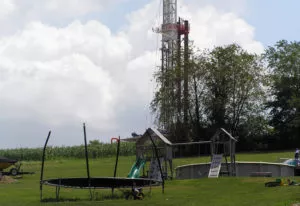
Pennsylvania’s long-in-the-works attempt to cut oil and gas methane pollution is being attacked as it approaches the finish line. The culprit is the conventional industry and their disingenuous attempt to avoid accountability.
The fact is that this industry has been fighting regulations for years. They’d rather spend money on lawyers and lobbyists than invest in technology that would cut their harmful climate and health pollution. This has extended to virtually every attempt at long-overdue updates to state protections, from air pollution to groundwater protection to the disposal of hazardous waste.
It’s no surprise then, that the conventional industry accounts for a considerable majority of oil and gas permit violations in the commonwealth.
EPA is on the verge of enacting federal standards for the regulation of oil and gas methane pollution. However, the Agency’s rule will come up short if it does not account for the hundreds of thousands of smaller, leak-prone wells in Pennsylvania and the U.S. that play an outsize role with industry’s methane pollution problem.
Methane is over 80 times more powerful at warming the climate than carbon dioxide. Methane pollution from the oil and gas industry’s smaller, marginal wells account for more than half of the industry’s greenhouse gas pollution in the U.S. while generating a mere 6% of oil and gas production. In Pennsylvania, almost all of these wells – tens of thousands of them – are conventional, or shallow-drilled wells. And yet, the long-lived conventional oil and gas industry, while unquestionably a large part of the methane emissions problem, refuses to be held accountable for its pollution in the commonwealth.
Earthworks has done much work to document methane pollution, which is invisible to the naked eye.

As a certified thermographer, I use a state-of-the-art, independently-verified optical gas imaging (OGI) camera to unveil methane pollution at oil and gas sites across the commonwealth. What I’ve seen through the lens of my camera is clear as day: small, conventional wells are sending plumes of methane and health-harming pollutants into our atmosphere every day.
According to research by Dr. Amy Townsend-Small of the University of Cincinnati, many wells that produce less than a barrel of oil per day vent into the atmosphere more than 100% of their reported gas production.
Simply put, pollution is pollution, regardless of how a well was drilled, and the conventional oil and gas industry does not get a free pass to draw its own exceptions and shirk responsibility.
As it is, the vast majority of these wells are owned by large companies. Here in Pennsylvania, Earthworks looked at how these companies bring in big dollars. Let’s face it, these operators can afford to take a camera out a couple times a year and inspect the well sites they own for emissions.
Oftentimes, fixing these emissions is simple and requires nothing more than tightening a valve or securing a hatch, and the fixes pay for themselves. Absent a strong regulatory framework, it is Pennsylvanians who will be left to pick up the tab in terms of remediation of equipment and facilities as well as public health costs.
Further, with the rapid escalation in gas prices, there is no excuse for the industry not to act – it’s in their own best interest. The industry is benefiting but refuses to be responsible.
The EPA must include these smaller, leak-prone wells in its draft supplemental rulemaking expected later this summer so that polluters like the conventional oil and gas industry in Pennsylvania are finally held to account.


